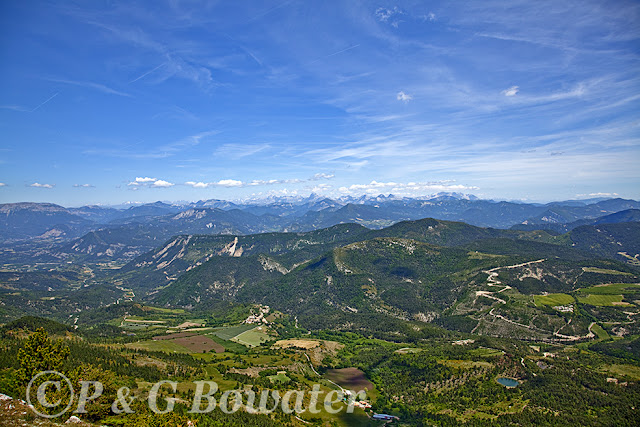Visit our website at: www.bowater.fr to see a comprehensive selection of our work and a large range of photographs for sale as limited edition prints.
The thousands of hectares of high valley meadows and Alpine pastures that flower so gloriously in Spring are probably largely a product of transhumance. Wild browsers in the mountains, decimated by the hunter gatherers, were replaced by flocks and herds driven onto the mountains at the beginning of Summer which eventually created the present agreeable mountain landscape. Without the annual arrival of the of large flocks of sheep and cattle the mountain pastures would grow rank and turn to scrub. The symbiotic relationship between the shepherds and herders and the landscape has worked very well and in regions such as this there is every reason to hope for continuity. Apart from the maintenance of the landscape and the practicality of using abundant fresh pastures for grazing, it would be hard to find a less polluted and healthier environment in which to raise sheep and cattle.
The life of a shepherd, lonely, physically demanding and responsible, doesn't appeal to everyone. Vast distances to walk, months living in simple huts and no great financial reward - and yet there are young shepherds and communities that support them. The Fete de la Transhumance is a celebration of an old and honourable tradition.
| The flock crossing the viaduct into Die on a glorious June morning |
 |
| . . . . and crowding into the Rue Camille Buffardel |
 |
| Arriving at the Saturday morning market in the Place de la Republique |
 | |
| Passing through the market dominated by Die's atypical Cathedral. |
 |
| Amongst the sheep are some splendid goats, full of character and sometimes a touch saturnine. |
The flock passes through and a surprising number of enthusiasts follow them up towards the plateau. The majority stays in Die to continue the celebrations. Restaurants insensitively offer special lamb menus, bands and groups of musicians perform all over the town and on Saturday evening, to continue another honourable tradition, there is an abundance of choice of street theatre - dance, acrobats, jugglers, shows and displays.

























